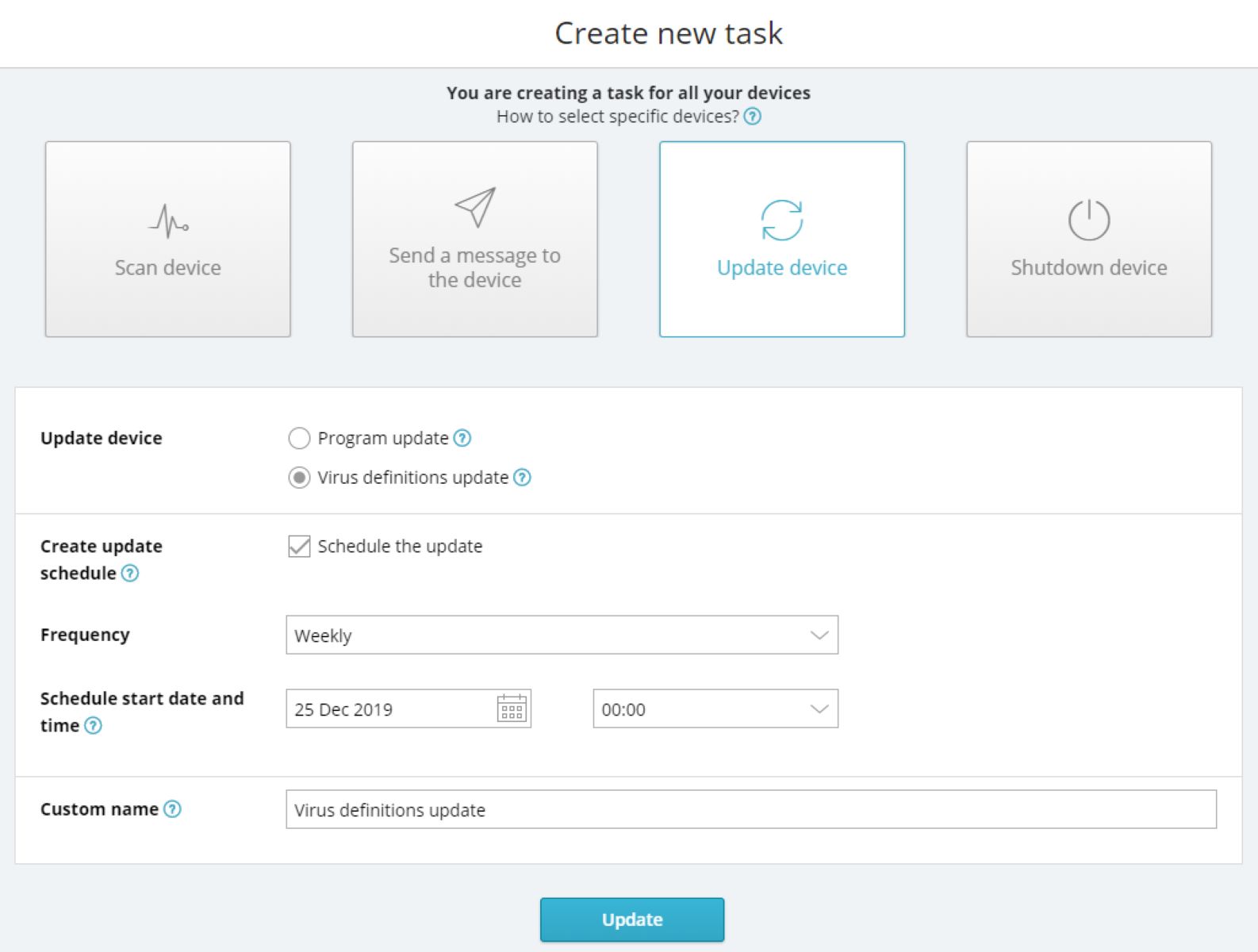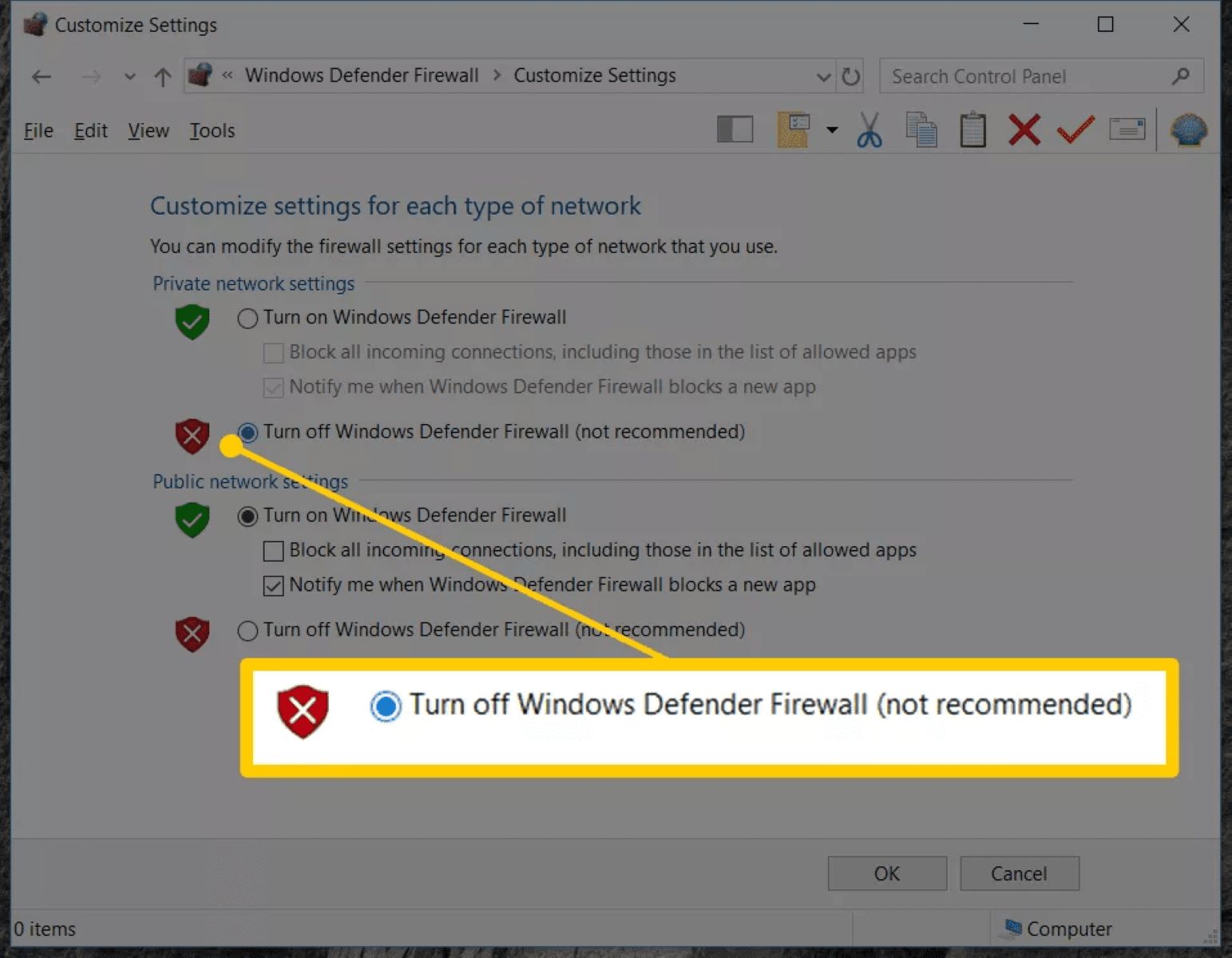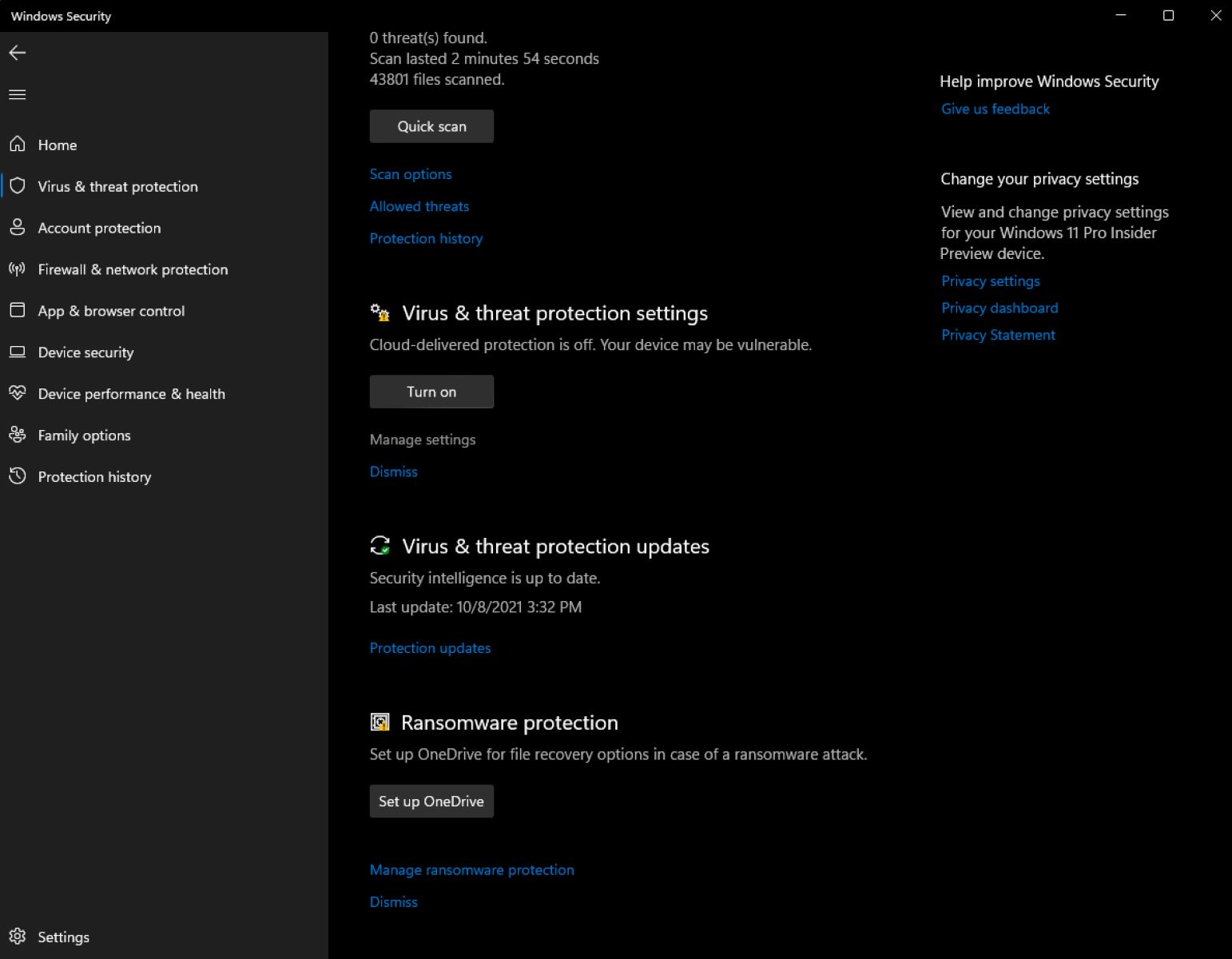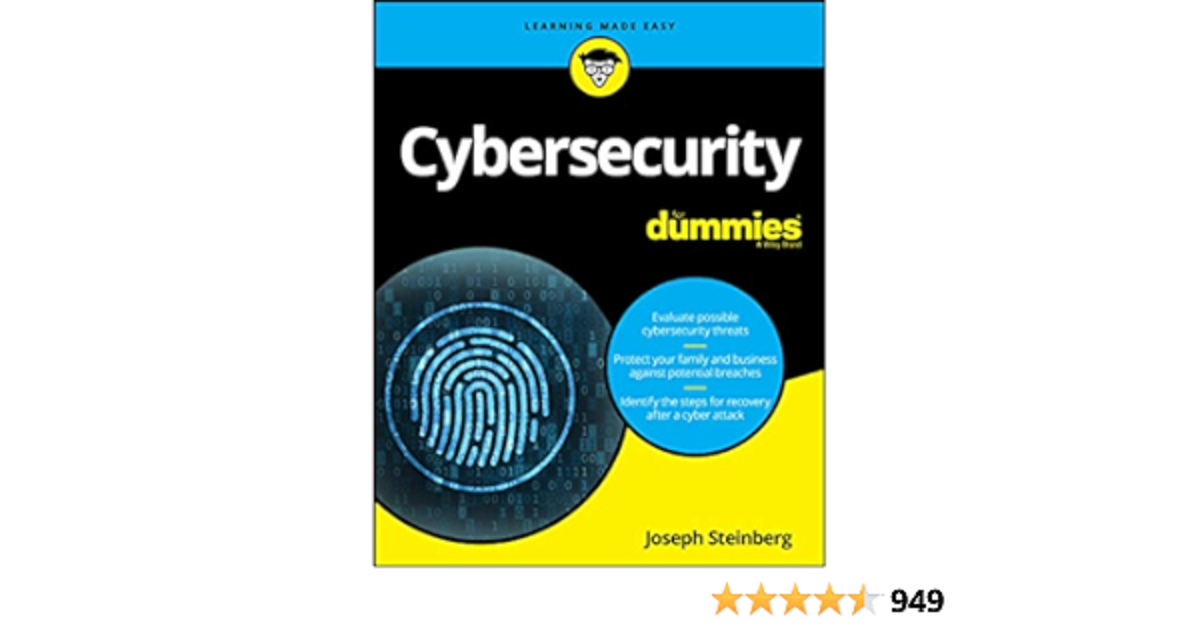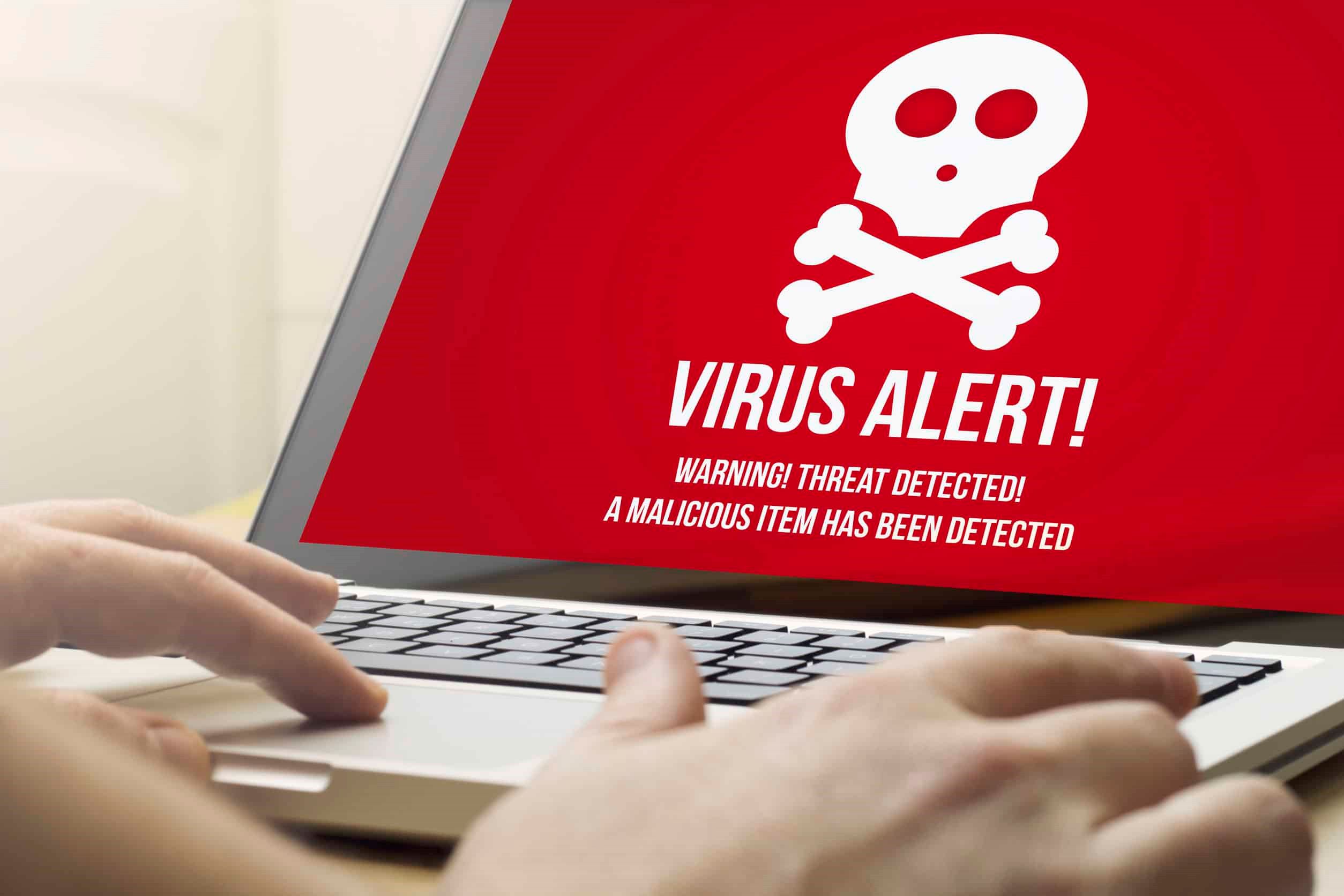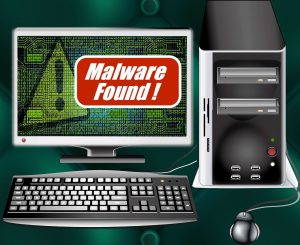Introduction
Antivirus software plays a crucial role in protecting our devices from malware and other cyber threats. With the ever-increasing number and complexity of malicious attacks, antivirus programs have become an essential tool in defending our systems. However, it’s important to acknowledge that no antivirus software is perfect, and they have their limitations. In this article, we will explore some of the shortcomings of antivirus software today.
While antivirus software has made significant advancements in recent years, it is essential to remain vigilant and be aware of its limitations. Understanding these limitations can help users make informed decisions about their cybersecurity measures and take proactive steps to enhance their protection.
It is important to note that this article does not intend to minimize the importance of antivirus software or discourage its usage. Antivirus solutions continue to be a vital part of a robust cybersecurity strategy. However, by recognizing their limitations, users and organizations can also adopt additional security measures to strengthen their defenses against evolving cyber threats.
Lack of 100% Detection Rate
One of the primary shortcomings of antivirus software is its inability to achieve a 100% detection rate for all types of malware. Despite the continuous updates and advancements in detection algorithms, malware creators are constantly finding new ways to evade detection.
Antivirus programs rely on signature-based detection, which compares files and code against a known database of malware signatures. While this method is effective in detecting known threats, it falls short when it comes to zero-day attacks and new variations of malware.
Zero-day threats refer to newly discovered vulnerabilities that hackers exploit before a patch or update is available. These attacks often go undetected, as antivirus software may not have signatures or detection mechanisms for these specific threats. This leaves systems vulnerable to attacks until vendors can release the necessary updates.
In addition, malware creators employ various techniques, such as encryption or obfuscation, to modify their code and evade detection. This ability to morph and hide their true nature makes it challenging for antivirus programs to detect and block them accurately.
It is important to understand that antivirus software relies on a reactive approach, meaning it needs to identify and analyze a threat before providing protection against it. This lag between the appearance of a new threat and its detection can leave systems vulnerable during that crucial timeframe.
While antivirus programs strive to provide the best possible detection rates, it is important for users to understand that no software can guarantee complete protection against all types of malware. Therefore, it is crucial to complement antivirus software with additional security measures, such as regular software updates, strong passwords, and user education.
Inability to Detect Zero-Day Threats
Zero-day threats pose a significant challenge for antivirus software, highlighting another major shortcoming in its capabilities. Zero-day threats refer to vulnerabilities or exploits that are unknown to software vendors and security experts.
These threats emerge when hackers discover and exploit security flaws before they are identified and patched by software developers. Since antivirus software relies on known malware signatures and patterns to detect threats, it is difficult for it to recognize and protect against zero-day attacks.
Zero-day threats can exploit vulnerabilities in operating systems, software applications, or even network infrastructure. They often go undetected until they are used in a targeted attack, leaving organizations and individuals defenseless.
One reason for the inability to detect zero-day threats is the fast-paced nature of cybercrime. Hackers continuously develop new and sophisticated techniques to evade traditional security measures. They employ advanced obfuscation techniques, polymorphic malware, or fileless attacks to conceal their activities and bypass antivirus detection.
Furthermore, the detection of zero-day threats requires constant monitoring and analysis of system behavior, network traffic, and the identification of unusual or suspicious activities. While some advanced antivirus solutions integrate behavior-based detection mechanisms, they are not foolproof and may still fail to identify complex zero-day threats.
Addressing the challenge of zero-day threats requires a multi-layered security approach. Organizations and individuals should consider complementing their antivirus software with additional security measures such as intrusion detection and prevention systems (IDPS), network monitoring tools, and vulnerability management programs.
Additionally, keeping software up to date with the latest patches and updates is essential in mitigating the risks posed by zero-day vulnerabilities. By promptly applying security updates, users can ensure that their systems are protected from known vulnerabilities.
While antivirus software may not provide foolproof protection against zero-day threats, it remains an important layer of defense in a comprehensive cybersecurity strategy. However, users should also stay informed about emerging threats and be proactive in implementing additional security measures to minimize the risk posed by unknown vulnerabilities.
Performance Impact on System
One common concern with antivirus software is its potential impact on system performance. While antivirus programs aim to provide robust protection, their continuous scanning and monitoring activities can consume system resources and have an impact on overall performance.
Traditional antivirus software employs extensive scanning mechanisms to check files, processes, and network activity for any signs of malware. This constant background scanning can result in increased CPU and disk usage, leading to slower system performance and longer response times.
Furthermore, real-time scanning, which constantly monitors files and processes as they are accessed, can cause delays in file opening and execution, especially on systems with limited processing power or older hardware configurations.
The impact on system performance may be more pronounced during regular antivirus scans, which are typically scheduled to check the entire system for any malware infections. These scans can consume significant system resources and potentially interfere with other tasks or activities performed on the computer.
However, it is important to note that advancements in antivirus technology have led to the development of more efficient scanning algorithms that aim to minimize the performance impact. Many modern antivirus solutions now incorporate intelligent scanning techniques, such as file whitelisting and heuristics, to optimize the scanning process and reduce false positives.
Users can also customize the scanning settings of their antivirus software to strike a balance between thorough protection and system performance. Some antivirus programs allow users to schedule scans during idle periods or specify specific folders or files to be scanned, reducing the strain on system resources.
Additionally, users can consider upgrading their hardware or investing in more powerful systems to mitigate the impact of antivirus software on overall system performance. It is crucial to strike a balance between ensuring robust security and maintaining a smooth and responsive computing experience.
Overall, while antivirus software can have an impact on system performance, the importance of protecting against malware and cyber threats cannot be understated. Users should evaluate various antivirus solutions, consider their system requirements, and customize settings accordingly to minimize the performance impact while ensuring reliable protection.
Limitations in Detecting Advanced Threats
As the threat landscape evolves, antivirus software faces challenges in effectively detecting and mitigating advanced threats. Advanced threats, such as advanced persistent threats (APTs) or targeted attacks, are specifically designed to evade traditional security measures and remain undetected.
One limitation of antivirus software is its reliance on signature-based detection. Signature-based detection works by comparing files and code against a known database of malware signatures. However, this method is less effective against advanced threats that utilize sophisticated techniques to circumvent detection.
Advanced threats often employ polymorphic malware, which continuously modifies its code to evade signature-based detection. By altering its appearance with each iteration, the malware becomes unrecognizable to antivirus programs, making it difficult to identify and block.
Furthermore, targeted attacks are typically customized and tailored to a specific organization or individual, making them harder to detect using traditional antivirus methods. These attacks often utilize zero-day vulnerabilities, advanced social engineering tactics, or use encrypted communications to evade detection.
Another limitation is that antivirus software primarily focuses on scanning files, leaving vulnerabilities in other areas unaddressed. For example, attacks may be initiated through compromised email attachments, malicious websites, or unauthorized network access. Antivirus software may not detect these threats if they do not involve the execution of a file.
Addressing the limitations in detecting advanced threats requires a multi-layered approach to cybersecurity. It involves adopting advanced threat detection technologies such as behavior-based analysis, machine learning, and artificial intelligence. These technologies can detect suspicious patterns, anomalous behaviors, and indicators of compromise that go beyond traditional signature-based detection.
Additionally, integrating threat intelligence feeds and utilizing tools for threat hunting can help identify and mitigate advanced threats proactively. By actively monitoring network traffic, analyzing log data, and investigating potential indicators of compromise, security teams can detect and respond to advanced threats more effectively.
While antivirus software remains an important component of a comprehensive security strategy, it must be supplemented with other advanced detection and prevention measures to effectively counter the ever-evolving landscape of advanced threats.
False Positives
False positives are a common issue with antivirus software, representing a significant limitation in its effectiveness. False positives occur when antivirus programs mistakenly identify legitimate files or processes as malicious and flag them as threats.
While false positives may seem like a minor inconvenience, they can have significant consequences for users and organizations. False positives can lead to the unnecessary quarantine or deletion of critical files, interrupting important tasks and causing data loss or system instability.
The occurrence of false positives can be attributed to several factors. One factor is the use of heuristic analysis, which involves identifying potentially suspicious behavior or code patterns. While this method helps to catch unknown threats, it can also result in false alarms when legitimate programs exhibit similar behaviors.
Another factor is the reliance on signature-based detection. Antivirus programs compare files and code against a database of known malware signatures. However, false positives can occur when a legitimate file or code segment shares similarities with a known malicious signature.
The consequences of false positives extend beyond individual users. In enterprise environments, false positives can disrupt business operations and lead to costly downtime. IT departments are often burdened with investigating and resolving false positives, diverting valuable resources from other critical security tasks.
To mitigate the impact of false positives, antivirus vendors continuously refine their detection algorithms and rely on user feedback to improve accuracy. Users can also adjust the sensitivity settings of their antivirus software to reduce the likelihood of false positives. However, reducing sensitivity may also increase the risk of missing genuine threats.
User education is essential in handling false positives. Users should be aware of the actions to take when a file or process is flagged as a threat. This may involve submitting the file for analysis to the antivirus vendor, adding it to the exclusion list, or temporarily disabling real-time scanning for a specific file or folder.
Overall, while false positives can be an inconvenience, they are a trade-off in the pursuit of better security. Antivirus software providers continue to invest in improving accuracy, but it is crucial for users to remain vigilant, exercise caution, and report false positives to help enhance the overall effectiveness of antivirus solutions.
Vulnerability to Exploits
Despite their role in protecting against malware, antivirus software themselves can be vulnerable to exploits. Exploits take advantage of vulnerabilities within the antivirus software, allowing attackers to bypass or disable its protection mechanisms.
One of the reasons for the vulnerability of antivirus software is its complex nature. Antivirus programs require deep integration with the underlying operating system, including privileged access to scan files and monitor system activities. This complexity increases the potential attack surface for hackers to exploit.
Attackers continuously search for vulnerabilities in popular antivirus software, as compromising these programs can provide them with significant access and control over a targeted system. Exploits targeting these vulnerabilities can allow attackers to disable antivirus protection, inject malicious code, or gain unauthorized access to sensitive data.
Additionally, antivirus software often relies on frequent updates and patches to address new malware threats and vulnerabilities. However, the process of deploying these updates can introduce its own security risks. Attackers may exploit vulnerabilities in the update process or compromise the update servers to distribute malicious software disguised as legitimate updates.
Furthermore, as antivirus software becomes more integrated and interconnected with other security tools and services, the potential for cross-product vulnerabilities increases. Exploiting vulnerabilities in one security component can serve as a stepping stone to compromise the entire security infrastructure.
To mitigate the risks associated with vulnerabilities in antivirus software, vendors must prioritize timely patching and address any reported vulnerabilities promptly. Regular updates ensure that known vulnerabilities are addressed and protection mechanisms are strengthened.
Users should also consider implementing additional layers of security, such as firewalls and intrusion detection systems, to complement the protection offered by antivirus software. In doing so, they can create a defense-in-depth approach that reduces the impact of specific vulnerabilities in the antivirus software.
Regular security audits and vulnerability assessments are also crucial in identifying and addressing any weaknesses in the antivirus software. By proactively identifying and patching vulnerabilities, organizations can stay ahead of potential exploits and minimize their exposure.
Overall, while antivirus software plays a critical role in protecting against malware, users and organizations must remain aware of the vulnerabilities that exist within these programs. By staying vigilant, keeping software up to date, and implementing additional security measures, users can help minimize the risk of exploits and ensure a strong defense against evolving threats.
Limited Protection against Social Engineering Attacks
One of the key limitations of antivirus software is its limited ability to protect against social engineering attacks. Social engineering refers to the manipulation of individuals to divulge sensitive information or perform actions that may compromise their security.
Unlike traditional malware attacks that antivirus software is designed to detect and block, social engineering attacks exploit the human element rather than technical vulnerabilities. These attacks rely on psychological manipulation, deception, and exploiting trust to trick individuals into performing actions that benefit the attacker.
Common social engineering techniques include phishing, where attackers send deceptive emails pretending to be trustworthy sources to trick users into revealing personal information, such as passwords or financial details. Other techniques include pretexting, baiting, and quid pro quo schemes.
Antivirus software may have limited ability to recognize and block social engineering attacks since they do not rely on traditional malware signatures or patterns. While some antivirus programs offer basic email filtering capabilities to detect and block known phishing emails, attackers can quickly adapt and create new variations of such attacks.
Addressing social engineering attacks requires a multi-pronged approach that combines user education and awareness with technical safeguards. Organizations and individuals must be educated about the common techniques used in social engineering attacks, how to identify them, and how to respond appropriately.
Implementing email filtering systems that utilize machine learning or artificial intelligence algorithms can enhance the detection of phishing and other social engineering techniques. These systems can analyze email content, URLs, and attachments to identify suspicious patterns or known phishing indicators.
However, it is crucial to understand that no technical solution can completely eliminate the risk of falling victim to a social engineering attack. Individuals must remain vigilant and exercise caution when receiving unsolicited emails, messages, or phone calls, especially if they involve requests for sensitive information or prompt urgent actions.
Regular security awareness training can help individuals develop a security-conscious mindset and educate them on the latest social engineering tactics. By promoting a culture of security awareness, organizations can empower their employees to recognize and report any suspicious activities promptly.
While antivirus software may have limited protection against social engineering attacks, it remains an integral part of a comprehensive cybersecurity strategy. Organizations and individuals must combine antivirus software with user education, awareness, and technical measures to strengthen their defenses against social engineering tactics.
Reliance on Signature-Based Detection
One of the primary limitations of antivirus software is its heavy reliance on signature-based detection. Signature-based detection involves comparing files and code against a vast database of known malware signatures. While this method is effective in detecting known threats, it falls short when it comes to identifying new or unknown malware variants.
The reliance on signature-based detection poses a significant challenge in the face of rapidly evolving and polymorphic malware. Cybercriminals continuously develop new malware variants or employ techniques such as code obfuscation and encryption to evade detection.
As a result, antivirus software may fail to identify and block the latest malware threats until security vendors update their signature databases. During this gap between the emergence of a new malware variant and the availability of its signature, systems remain vulnerable to attacks.
Furthermore, signature-based detection is inherently reactive, as it requires the identification and analysis of a threat before protection can be provided. This reactive approach means that zero-day threats or previously unknown malware can go undetected until they have already compromised systems.
While antivirus vendors continually update their signature databases and release regular updates to address new malware variants, there is an inherent time lag between the emergence of a threat and its detection. During this time, systems are vulnerable to attacks and may be compromised before the antivirus software can provide protection.
To augment the limitations of signature-based detection, many antivirus solutions incorporate additional detection methods, such as heuristics, behavior-based analysis, and machine learning algorithms. These technologies aim to identify suspicious behavior or activity patterns that may indicate the presence of malware, even without a known signature.
However, while these advancements improve detection rates, they are not foolproof and can still generate false positives or false negatives. False positives occur when legitimate files or activities are mistakenly flagged as malware, while false negatives result when malware goes undetected.
Complementing antivirus software with other security measures, such as intrusion detection systems, network monitoring, and threat intelligence feeds, can help strengthen overall protection against unknown malware. By incorporating multiple layers of defense, organizations can mitigate the risks associated with the reliance on signature-based detection.
Technology is continually evolving, and antivirus vendors are exploring innovative detection techniques to supplement signature-based detection. However, recognizing the limitations of this approach is crucial to maintaining a proactive and multi-faceted approach to cybersecurity.
Difficulties in Removing Persistent Malware
One of the significant challenges faced by antivirus software is the removal of persistent malware. Persistent malware refers to malicious software that remains on a system even after detection and attempts for removal. It can be extremely challenging to completely eradicate persistent malware, often requiring advanced techniques and tools.
When antivirus software detects malware on a system, it typically attempts to quarantine or remove the malicious files. However, persistent malware is designed to resist these removal attempts and maintain its presence on the infected system.
One reason for the difficulties in removing persistent malware is its ability to embed itself deeply within the system. It can modify system files, alter registry entries, or conceal itself in hidden directories or disguised file names. This makes it challenging for antivirus software to identify and remove all instances of the malware.
Additionally, persistent malware often employs advanced techniques to ensure its survival. It can create backup mechanisms or establish communication channels with remote servers to reinstall itself if any components are detected and removed by the antivirus software.
Rootkits, a type of persistent malware, are particularly troublesome for antivirus software. Rootkits have privileged access to the operating system, allowing them to gain control over critical system functions and hide their presence from antivirus scans. This makes detection and removal of rootkits extremely challenging.
Furthermore, persistent malware may have the ability to disable or interfere with antivirus software itself. It can terminate antivirus processes, modify settings, or block updates, preventing the software from effectively combating the malware.
To overcome the difficulties in removing persistent malware, specialized removal tools or manual removal procedures may be required. These tools leverage advanced techniques to detect and eliminate deeply entrenched malware.
System restoration from a clean backup is another approach to consider if available. However, it is crucial to ensure the backup is created before the system was infected to avoid restoring malware-infected files.
Prevention is key in dealing with persistent malware. Regularly updating software and operating systems, practicing safe browsing and downloading habits, and using reputable security solutions can help reduce the risk of infection in the first place.
In cases where persistent malware is encountered, seeking assistance from professional cybersecurity experts or support forums can provide guidance and specialized knowledge to navigate the complexities of removal.
Overall, the removal of persistent malware can be challenging for antivirus software. While advanced techniques and specialized tools exist, prevention and proactive security measures remain crucial in minimizing the impact and risks associated with persistent malware.
Ineffectiveness against Polymorphic Malware
Antivirus software faces a significant challenge when it comes to combating polymorphic malware, highlighting a major limitation in its effectiveness. Polymorphic malware is a type of malicious software that constantly changes its code structure, making it difficult for antivirus programs to detect and block.
Polymorphic malware employs sophisticated obfuscation techniques to alter its code and appearance with every iteration. By changing its signature and structure, the malware evades traditional signature-based detection methods used by antivirus software.
This constant mutation of polymorphic malware presents a major challenge for antivirus programs that rely on signature databases. Even with frequent updates to the databases, keeping up with the ever-evolving variations of polymorphic malware is a daunting task.
Moreover, polymorphic malware may use encryption techniques to further disguise its malicious payload. By encrypting the code, it becomes unreadable to antivirus software, hindering detection and analysis.
Antivirus programs that solely rely on signature-based detection methods struggle to effectively identify and block polymorphic malware. The changing nature of polymorphic malware results in a persistent cat-and-mouse game between malware developers and antivirus vendors.
To address the ineffectiveness against polymorphic malware, antivirus software vendors have incorporated other techniques such as heuristic analysis and behavior-based detection. Heuristic analysis employs algorithms to identify potential threats based on patterns, behavior, or anomalies in code execution.
Behavior-based detection, on the other hand, tracks program behavior to identify suspicious activities that may indicate the presence of malware. By analyzing the behavior of applications and processes, antivirus software can detect polymorphic malware even without relying solely on static signatures.
However, while these advanced detection methods have improved the detection rates against polymorphic malware, they are not foolproof. Polymorphic malware continues to evolve, employing increasingly sophisticated techniques to evade detection.
Addressing the challenge of polymorphic malware requires a multi-layered security approach. Alongside antivirus software, organizations and individuals should implement other security measures, such as network firewalls, intrusion detection systems, and user education.
Regularly updating software and operating systems is crucial in protecting against polymorphic malware. Patches and updates often include security fixes that address known vulnerabilities, reducing the likelihood of successful malware infection.
Behavior monitoring and anomaly detection solutions can complement antivirus software by identifying abnormal activities indicative of polymorphic malware. These solutions analyze system behavior in real-time, providing an additional layer of defense against emerging threats.
While the battle against polymorphic malware continues, a proactive and defense-in-depth approach that combines various security technologies and practices is necessary to effectively combat this ever-changing threat.
Lack of Cross-Platform Compatibility
A notable limitation of antivirus software is its lack of cross-platform compatibility. Antivirus solutions are typically developed for specific operating systems, such as Windows, macOS, or Linux, which can result in a lack of protection for systems outside the supported platforms.
This limited cross-platform compatibility creates vulnerabilities for devices that operate on less common or niche operating systems. These systems may not have effective antivirus solutions available, leaving them exposed to malware threats.
Cybercriminals are aware of these gaps in cross-platform protection and may specifically target systems that are not commonly covered by mainstream antivirus software. This includes mobile devices running on operating systems such as Android or iOS, as well as Internet of Things (IoT) devices.
The lack of cross-platform compatibility also creates challenges in environments where multiple operating systems are used. For organizations or individuals with mixed-OS environments, it becomes necessary to find and deploy antivirus solutions that are compatible with each specific platform. This can be time-consuming and may result in a fragmented security strategy.
Addressing the issue of cross-platform compatibility requires the development and adoption of antivirus solutions that offer protection across a wider range of platforms. Antivirus vendors and security companies need to expand their offerings to include solutions for various operating systems, ensuring that all devices can benefit from effective malware protection.
For users operating on less common platforms, it is important to take proactive steps to protect their systems. This may involve implementing additional security measures, such as firewalls, intrusion detection systems, or specialized security software designed specifically for their operating system.
Regular updates and patches for all operating systems and software are crucial in minimizing vulnerabilities. By promptly applying security updates, users can mitigate the risk of malware infections and known vulnerabilities.
Additionally, fostering collaboration between operating system developers and antivirus vendors can help improve cross-platform compatibility. Shared knowledge and cooperative efforts can result in more robust security measures that encompass a wider range of operating systems.
While it may be challenging to find antivirus solutions that offer comprehensive cross-platform protection, being proactive in implementing security measures, staying vigilant, and educating oneself about the risks can significantly reduce the potential impact of malware attacks on systems without compatible antivirus software.
Limited Protection against Fileless Malware
Antivirus software faces a significant challenge in providing effective protection against fileless malware. Fileless malware is a type of malicious software that operates without leaving a traceable file on the infected system. This makes it difficult for traditional antivirus programs to detect and block.
Fileless malware relies on exploiting vulnerabilities in legitimate system tools or processes, such as PowerShell or Windows Management Instrumentation (WMI), to carry out its malicious activities. By operating directly in memory, fileless malware can evade detection by traditional signature-based antivirus systems that primarily focus on scanning files and code.
The absence of a physical file on the system makes it harder for antivirus software to detect the presence of fileless malware. As a result, fileless attacks can go undetected for extended periods, allowing cybercriminals to establish persistence, conduct malicious activities, and exfiltrate sensitive information.
Fileless malware often leverages scripting languages, such as PowerShell or JavaScript, to execute malicious code directly in memory. These legitimate tools and languages are instrumental in various administrative tasks, making it difficult to distinguish between legitimate and malicious usage.
Addressing the limitations in protection against fileless malware requires antivirus vendors to incorporate behavior-based analysis and heuristic techniques into their detection capabilities. By monitoring system behavior and identifying suspicious actions, antivirus software can potentially detect and block fileless attacks, even without relying on traditional file scanning methods.
Supplementing antivirus software with other security measures can also help mitigate the risks associated with fileless malware. Network intrusion detection systems (IDS) and endpoint detection and response (EDR) solutions can monitor system and network activity for signs of fileless attacks.
Regularly updating operating systems and software is essential in protecting against fileless malware. Patches and updates often address known vulnerabilities that attackers leverage to execute fileless attacks. Keeping systems up to date helps reduce the surface area available for exploitation.
User education and awareness play a critical role in combating fileless attacks. By understanding the techniques and tactics used by fileless malware, users can adopt safer browsing habits, exercise caution when executing scripts or opening email attachments, and report any suspicious activities.
While antivirus software continues to evolve to detect fileless malware, it remains challenging to provide comprehensive protection against this stealthy threat. However, integrating a combination of advanced detection techniques, proactive security measures, and user vigilance can significantly reduce the risk of falling victim to fileless malware attacks.
High Cost and Complexity for Enterprise Solutions
One of the limitations of antivirus software for enterprises is the high cost and complexity associated with implementing and maintaining robust security solutions. As organizations face increasingly sophisticated and targeted cyber threats, they require comprehensive antivirus solutions capable of protecting their networks, endpoints, and data. However, acquiring and managing these enterprise-grade solutions can be a challenging endeavor.
Enterprise-level antivirus solutions often come with a higher price tag compared to consumer-grade alternatives. The cost can include licensing fees, additional hardware requirements, and ongoing maintenance expenses. For smaller organizations with limited budgets, investing in comprehensive antivirus protection may pose a financial burden.
Besides the higher costs, enterprise antivirus solutions can be complex to implement and manage. The setup and integration of antivirus software across multiple endpoints, servers, and network components require expertise and specialized skills. Organizations often require in-house or external IT teams dedicated to managing and maintaining these complex security systems.
Furthermore, keeping enterprise antivirus solutions up to date and effective requires ongoing monitoring, fine-tuning, and regular updates. Enterprises must allocate resources to ensure that antivirus software has the latest threat intelligence, detection capabilities, and security patches. The complexity of managing these requirements adds another layer of responsibility and potential challenges for organizations.
High complexity and cost challenges in enterprise antivirus solutions can also arise from the need to integrate with other security components. Enterprises must ensure seamless interoperability between antivirus software, firewalls, intrusion detection systems, and other security tools. Incompatibilities and configuration issues can lead to gaps in security coverage, compromising the organization’s defense against threats.
Despite these challenges, adequate antivirus protection is critical for enterprises to safeguard sensitive data, maintain regulatory compliance, and preserve business continuity. Organizations can mitigate the high-cost and complexity issues by carefully assessing their specific needs, considering managed security service providers (MSSPs) for outsourced security management, and leveraging cloud-based security solutions that offer cost-effective scalability.
Investing in employee training and awareness programs can also help maximize the effectiveness of enterprise antivirus solutions. Educating employees about cybersecurity best practices, recognizing potential threats, and understanding the importance of following security protocols can significantly strengthen the overall security posture.
Ultimately, striking a balance between cost, complexity, and cybersecurity needs is crucial for enterprises. Through careful planning, resource allocation, and ongoing management, organizations can overcome the challenges associated with implementing and maintaining enterprise antivirus solutions, ensuring comprehensive protection against evolving cyber threats.
Conclusion
While antivirus software plays a crucial role in protecting our devices and networks from malware, it is important to acknowledge its limitations. No antivirus solution can guarantee 100% protection against all types of threats. Understanding these limitations can help users and organizations make informed decisions about their cybersecurity strategies and adopt additional security measures to enhance their defenses.
Antivirus software faces challenges such as the inability to achieve a 100% detection rate, the difficulty in detecting zero-day threats and advanced malware, the impact on system performance, and the vulnerability to exploits. It may also struggle to detect and remove persistent and polymorphic malware, have limitations in detecting social engineering attacks, be reliant on signature-based detection, and lack cross-platform compatibility.
To overcome these limitations, a holistic approach to cybersecurity is necessary. This includes integrating multiple layers of protection, such as behavior-based analysis, heuristic techniques, intrusion detection systems, and user education. Regular updates, patch management, and proactive security practices are crucial in minimizing vulnerabilities and reducing the risk of successful attacks.
Organizations and individuals should carefully evaluate their specific needs and budget constraints when choosing antivirus software. In enterprise environments, the high cost and complexity of implementing robust security solutions should be balanced with the organization’s risk tolerance and budget limitations. Training employees, raising awareness, and adopting best practices are essential to fortify the overall security posture.
While antivirus software is an important component of a comprehensive cybersecurity strategy, it should not be relied upon as the sole defense. Adapting to the ever-changing threat landscape requires constant vigilance and a proactive mindset. By understanding the limitations of antivirus software and adopting additional security measures, individuals and organizations can better protect themselves against evolving cyber threats.











